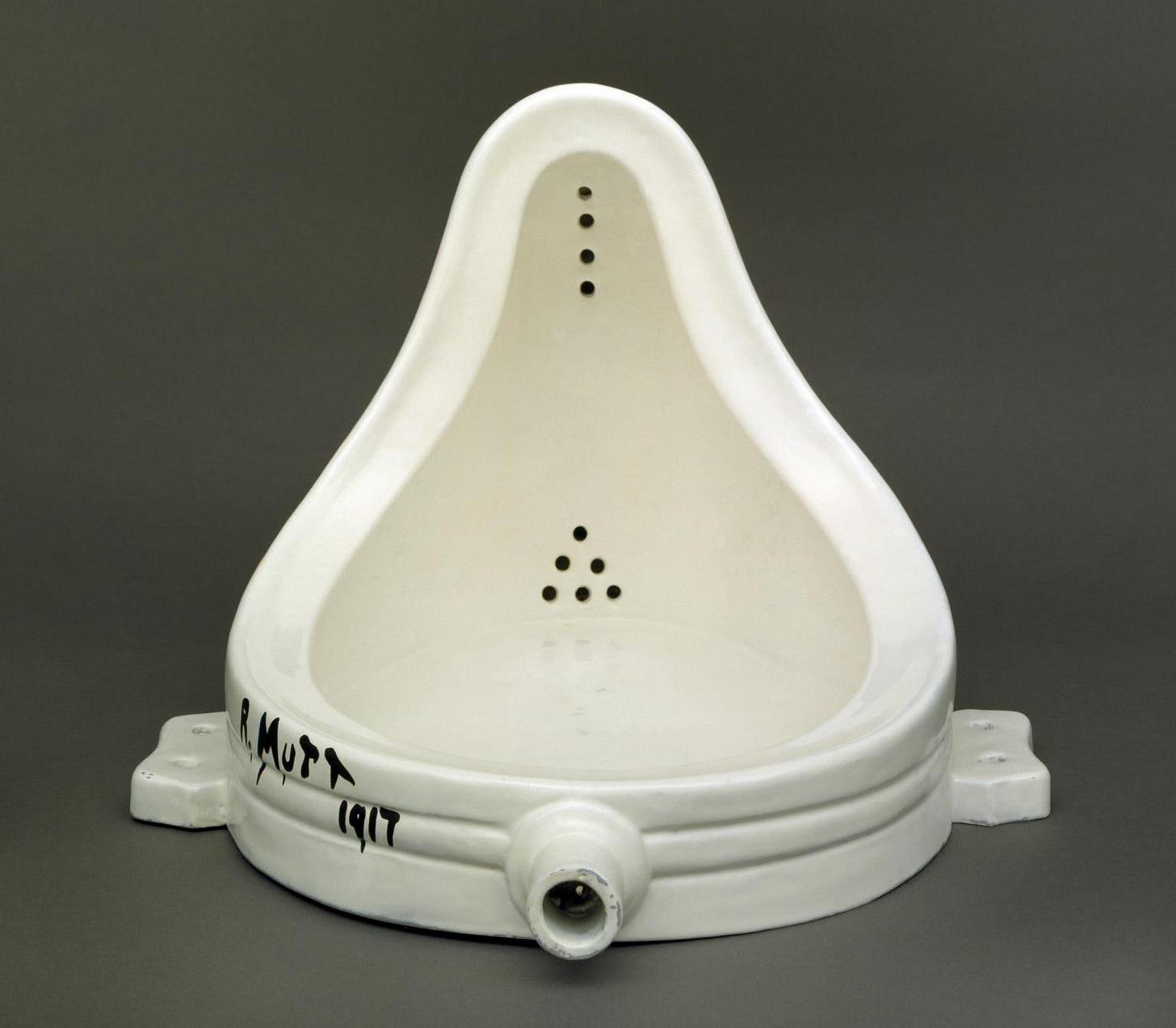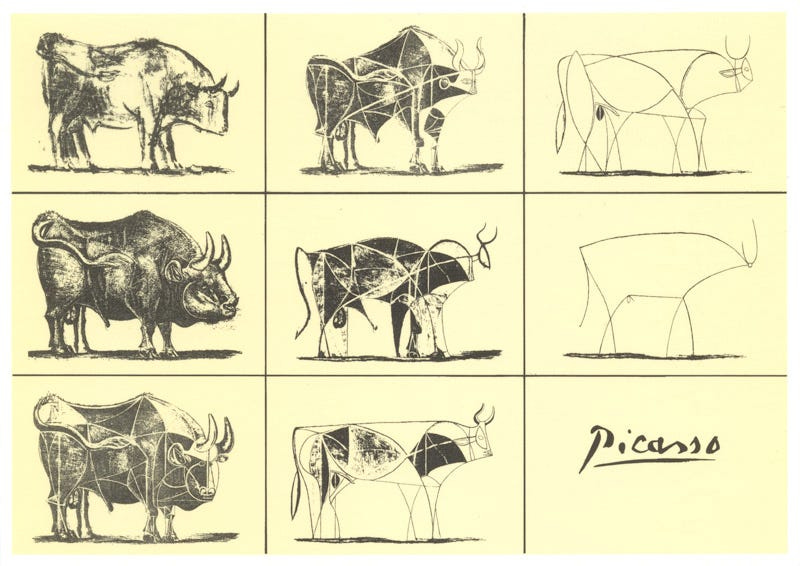When you look at this picture, what are your thoughts?
Take a moment to appreciate the vivid scene with its colours and intricate details.
Can you guess the age?
Looking deeply into this painting is an exploration of wonder that can be hard to describe.
There is so much detail to take in.
I can imagine a significant amount of time goes into producing such a stunning piece.
The question I have, however, is how much time has been spent viewing this masterpiece?
Here is a thought experiment: 🧪 🧫
If I look at this painting in a museum for 30 seconds, and so do another 120 people on that day. Then an hour has been spent engrossed in the image.
Can you imagine the number of people over the ages who have admired this landscape for over 300 years?
Extrapolate that minute a day over centuries, and you get a startling result.
Lifetimes worth of contemplation has perceived this "Wheat Fields. "
ca. 1670, by Jacob van Ruisdael Dutch.
Notice The Art of Living
These ancient memoirs are an echo of the fact that an artisan exists in all of us.
You, too, can appreciate art with a sense of consciousness that can take in infinite allure in a finite moment.
You, too, can train yourself to observe the magic contained within a single frame of existence.
Taking a step back to see with "new eyes" and question with curiosity might just reveal a world/moment that is so intricately divine that the simplest observation can change your state.
The key is to take notice and look beyond a narrow scope.
The artist within can look at a scene and capture a finite moment and make it infinite.
The artist is one who can see the beauty and complexity in a single fleeting second.
The works encapsulated throughout history follow this pattern.
We have this power because we are both the creator of our interpretation and the observer of the moment.
If Marcel Duchamp can see art in this urinal, then maybe you too can notice the magic of living and observing.
Interpreting Your Perception
There is much to be said about the wealth contained in this present moment.
Our human perception consists of an eternity of now.
Like a motion picture, the still images in succession give the impression of movement, each film frame containing rich material.
This very moment is the complex result of many contributing factors from the past and future.
We perceive time and reality in this eternal now, with the added benefit of imagination.
We can imagine the future and remember the past, but our reality, as a participant, exists in the moment.
The deep level of awareness captured by an artist is why a piece of art is so unique.
The artist can manipulate their perspective and immortalise it for a focused audience.
Art takes a moment that is fleeting and finite and makes it infinite and expansive.
The artist may take 100 hours to produce a painting of a single moment, and as the consumer, we get to see a slice of life through an alternative lens.
Picasso's Napkin Anecdote
There is an old tale that goes something like this:
Picasso was sitting in a French cafe, enjoying his morning coffee.
He pulled out a marker and started doodling on a napkin because the world was his canvas, and he saw art everywhere.
Onlookers stared in awe to see what the great artist would produce.
He later handed some cash to the waitress as he briskly made his way towards the exit.
On his way out, he mindlessly threw his sketch in the bin.
A voice from behind quickly called out, "Can I buy that napkin from you?"
A mischievous smile emerged from Picasso as he slowly turned around.
He scrummaged the napkin from the garbage and extended his arm to the patron as he said, "That will be 40,000 francs."
You can imagine the look on the potential buyers face as they contorted in confusion and said, "but that only took you 30 seconds to draw?"
To which Picasso responded, "No, This took me a lifetime".
Ironically, one such Picasso doodle sold for 20,00 pounds in 2009 [1]
Infinity In The Finite
Picasso had worked his entire life to produce art that people loved.
From his strokes and impressions, he would encapsulate a part of himself into his art.
One can look at his 1903 painting called "La Vie" during the "Blue Period" of his life and instantly get a sense of the emotions contained within.
His work was an extension of himself, as he existed in his environment, as a cultural member of society.
His art was a reflection of his life and emotional state, from his perspective.
His style contributed significantly to modern art and thought. Moreover, Picasso influenced subsequent artists to build on the foundations that he created.
His artwork has gone on to outlive him and will likely exist for time immemorial.
Art has a magical ability to capture both emotion and time while transcending beyond the artist.
Music, literature, and a variety of other forms of expression give humans a superpower.
The power to peer back through time into the lives, emotions, and experiences of people long forgotten.
Some of the most noteworthy people throughout history are those who have captured the ideas of their time.
Think Shakespear, Micheal Angelo, or Leonardo Da Vinci.
The Defining Works
Eventually, groundbreaking ideas become ingrained into our culture.
The knowledge is the result of progressive societal norms, popularised by artists who can communicate in contemplative forms.
The art reflects life, and life informs art.
The cycle of life and art has a lot to do with the fact that we are generally wiser and better educated than the people who preceded us.
It’s not that we are more studious, but we have been privy to the evolution of art and culture, which has been moulded into the structure of our society.
It is almost as if a shared consciousness exists that builds upon itself as we progress as a civilisation.
These ideas often become part of us on such a deep level that the wisdom you possess needs no explanation.
These ideas become common knowledge and the grounds for which new ideas are constructed and elaborated.
The Infinite Game
We can develop the ability to look at the world and recognise its charm.
It requires elegance to notice the attractive nature of the world around us.
Each moment is finite, yet it can be moulded into the infinite with an artist’s eye.
An artist can take a single moment and encapsulate it in a way that creates infinite possibilities for interpretation and experience.
The perspective can then be distilled and captured, and may even be used as the basis to build cultural and societal norms.
The infinite game continues forever, with no end, with the primary purpose being a continuation and hopefully progress.
Many artists themselves have transcended their brief existence by leaving unique creations that outlived them.
The art that survives is the awesome work that can make its way into the subconscious of future generations.
Lifetimes have been spent contemplating the art of past societies.
And lifetimes will be spent building on their foundation.
The artist eye can take a fleeting moment and make it permanent.Just like we do with our memories by capturing emotion and expression.
If we are more conscious and intentional about the process of increasing our awareness, we too can create beautiful memories and moments.
What art is hiding from you in plain sight?
-
Next week we will dive deeper into the concept of the value of art from a different angle.
If you want to be sure to get Part 2, please consider subscribing.














